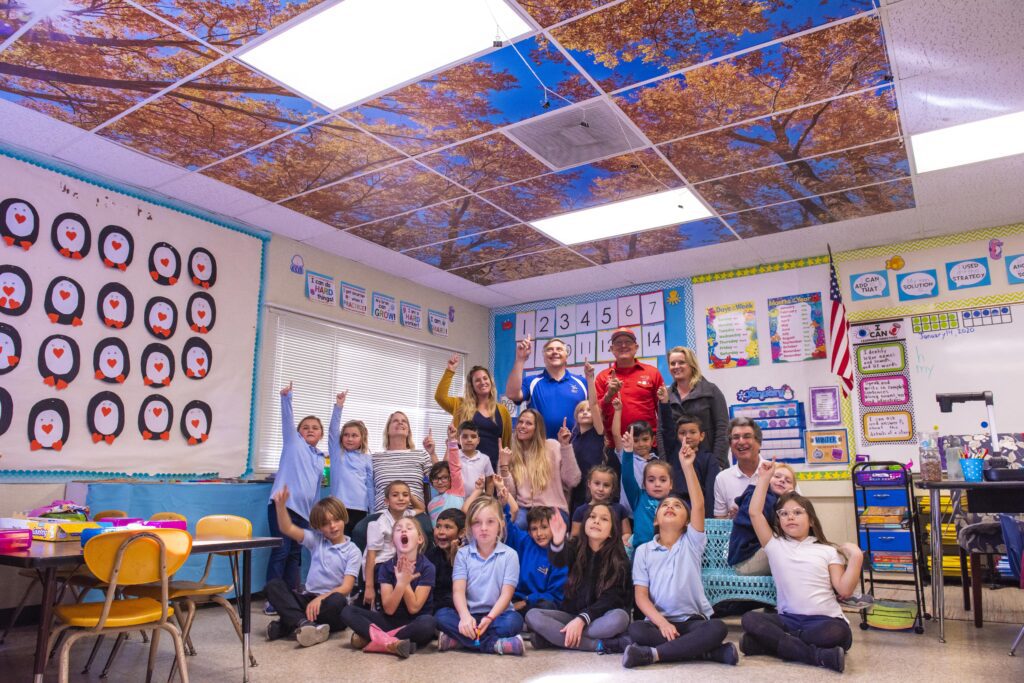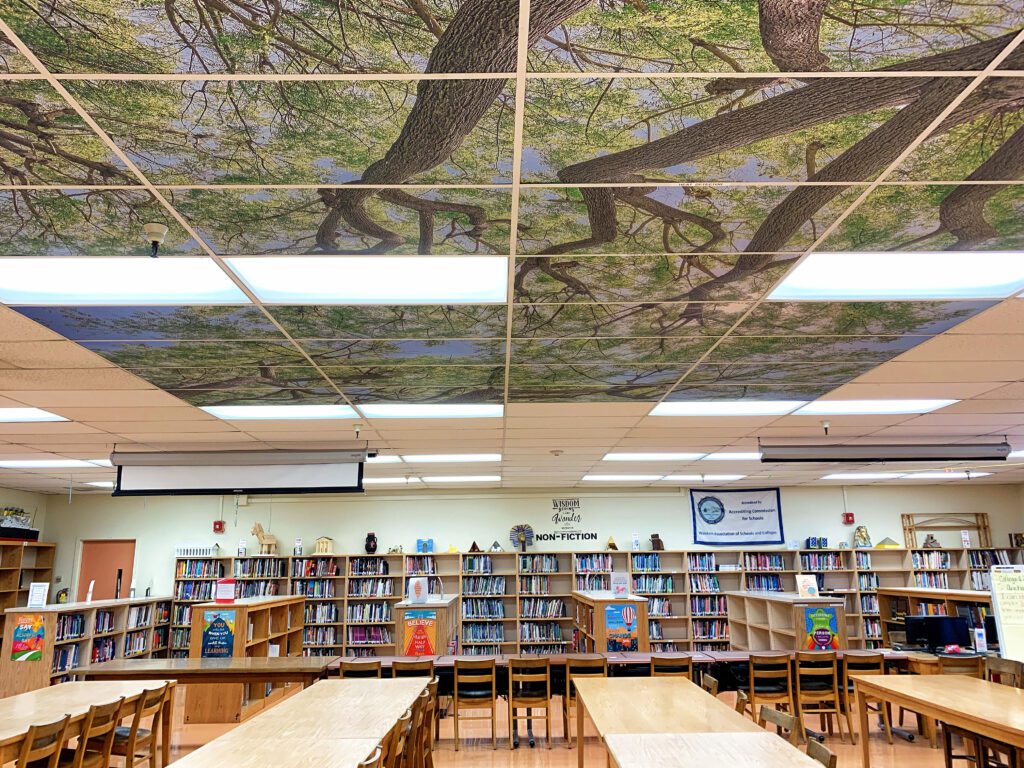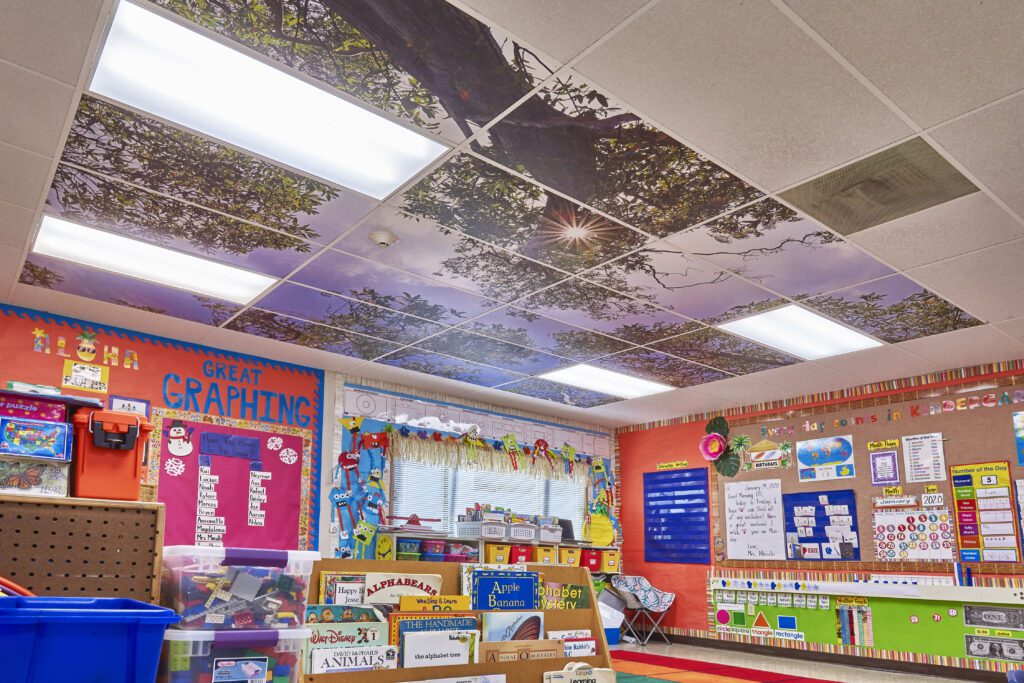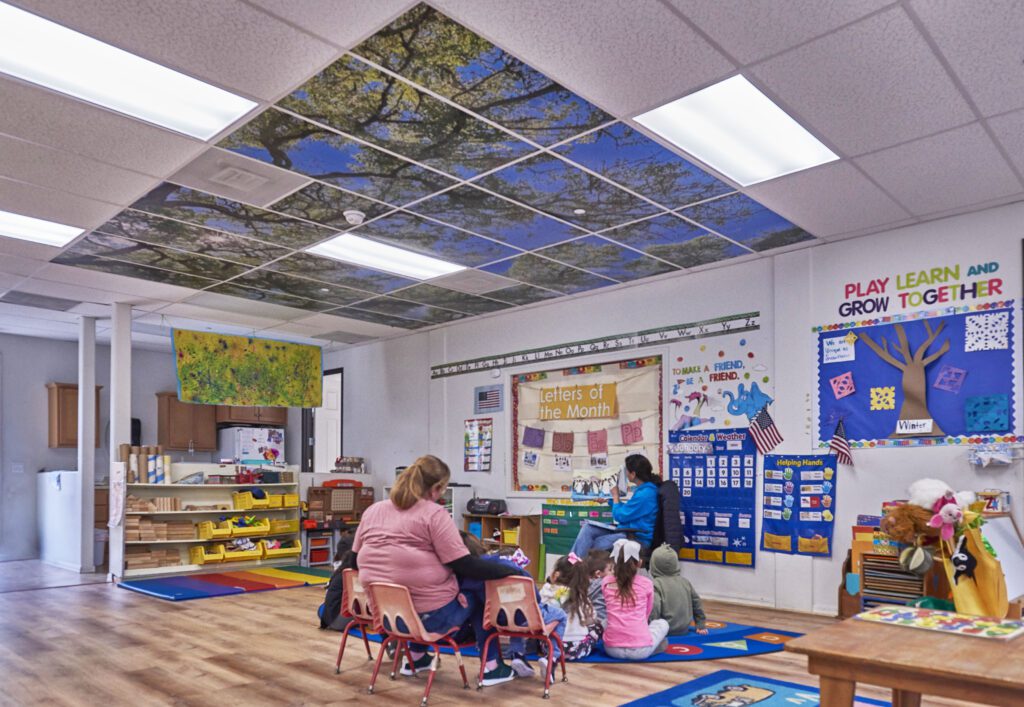Ernesto Rodriguez, who lives on Southern California’s idyllic Catalina Island, can frequently be found photographing trees. He ventures out to various forests, stands in clearings, and aims his camera at the slivers of sky that peek through branches and leaves.
“You take 15 pictures on one plane, and you tilt the camera up 30 degrees. You do another 15 photographs, tilt it up another 30 degrees and do another 15 images,” he told Nice News. “And then you shoot one straight up. So it gives you 46 photographs.”
Those sets of 46 photographs aren’t Rodriguez’s only output — his fine art portfolio boasts stunning landscape shots and he works as a professional commercial photographer as well — but they do serve a very specific purpose. Since 2018, he’s been printing and installing vibrant, lifesize tree canopies on school ceilings with his nonprofit, Nature in the Classroom.


Over the past six years, Rodriguez and his team of volunteers have brought the canopies to more than 30 schools in 10 school districts across California and Colorado, and, recently, one in New York. The project is largely based on the findings of Attention Restoration Theory, which was developed in the late 1980s out of the University of Michigan and has been supported with decades of empirical evidence since. It posits that spending time in nature, or even viewing photos of nature, can improve attention-directed abilities.
“The brain is wired to view and interpret nature,” Rodriguez explained. “There’s a pattern that basically paints the natural environment. It’s called a fractal. And fractals define trees. They define leaves, they define coastlines, clouds, mountains. So the brain can more readily assess a natural environment than an urban environment because of the geometry of both.”


Ernesto Rodriguez
“It’s the difference between fractals and parallel lines,” he continued, adding: “When something is out of place in the natural environment, you pay attention to that because it’s a lifesaving mechanism. That’s what we’re wired for over the last 2 million years. So I thought, ‘Well, why on earth isn’t this being used in schools?’”
RELATED: Greenery and Color in Urban Settings Boost Morale, Study Finds
That question came to Rodriguez after he’d started volunteering as a park ranger for the Catalina Island Conservancy in 2015 and was introduced to Attention Restoration Theory. But the concept wasn’t entirely new to him: He’d been doing the same thing in hospitals for nearly two decades, a business idea borne from a visit to a friend’s hospital room. Rewind even further, and you get to Rodriguez’s first career as a school psychologist in the ’80s, training that primed him to bring his tree canopies into educational settings.


According to the Nature in the Classroom website, students and teachers spend 85%-90% of their time indoors at school, and many classrooms don’t have any windows. The tree canopies bring a metaphorical breath of fresh air as well as a sense of serenity to places where young people can benefit from them most. A two-year pilot study found that the canopies have a settling effect on students, while children themselves report feeling happier. The ceilings have also “sparked curiosity about environmental stewardship.”
It’s a welcome change for Leslie Snyder, who teaches seventh and eighth grade English language arts at a middle school in Cathedral City, California. Rodriguez installed a canopy in her classroom the day before school started in August 2023, and it has made a big impact on not only her students but also herself.


“My classroom has one window (that is covered) facing into an inside hallway,” Snyder said in an email interview. “I do not have access to any outside light. I am in this classroom for eight or more hours a day. I have found that the ceiling tiles have made a huge difference in my mood. When I enter the classroom, I feel calm and excited to be here.”
The kids agree. “It was a very nice surprise,” one student, who had class in the same room last year without the canopy, wrote in a testimonial shared with Nice News. “I have noticed that ever since the tiles were installed, my focus in the class has increased, and I’d say this is the class I’m most productive in.”
Another added: “When I feel stressed or anxious, I look up at the ceiling and look at the trees. Then, a few minutes pass and the stress has disappeared.”


As of now, the organization is funded by donations and gives out grants to teachers who apply for a canopy. Rodriguez has high hopes that it will continue to expand, so he and his team can bring nature to more schools across the country. The nonprofit is currently preparing to conduct another study on the canopies’ impact, this time with the help of an expert on bioinspiration for health from the University of Oregon.
For Rodriguez, the most meaningful validation so far, though, came from a kindergartner. While visiting a classroom in Colorado where a canopy had recently been installed, he found himself sitting in a circle on the floor surrounded by exuberant youngsters.
“This little girl was sitting in front of me and I said, ‘Hey, what do you like about having a tree in your classroom?’” he recounted. “And she was sitting on her calves, and she straightens up, and she flicks her hair back. And she looks at me, and she goes, ‘It calms me up.’”
Help fund a Nature in the Classroom tree canopy.











